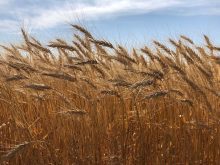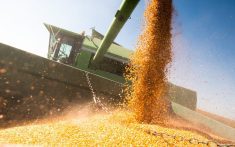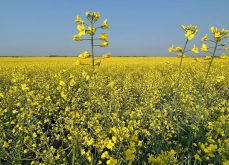MarketsFarm — Traders and analysts awaiting Statistics Canada’s first survey-based acreage report for the 2022-23 crop year on Tuesday believe competition amongst crops — as well as their dependence on fertilizer, and the possibility of another drought this summer — will be determining factors.
Canola stands as the best representation of traders’ concerns. Despite reaching record-high prices due to drought last summer, growers seem reluctant to plant the oilseed. Trade estimates suggest anywhere between 21.6 and 22.75 million acres will be grown in Canada for the 2022-23 marketing year, which would compare with the 22.48 million seeded the previous year.
Read Also

U.S. grains: Soy futures dip as traders await China sales; corn, wheat sag
U.S. soybean futures retreated on Monday from a one-week top on a lack of fresh soy sales to top buyer China and lingering doubts over whether the Asian nation will buy 12 million tonnes of the oilseed by the end of 2025
MarketsFarm expert Bruce Burnett believes recent precipitation in canola-growing areas of the Prairies should convince growers to plant the oilseed this year.
“The prices are very attractive. The only negative for canola is basically the fertilizer costs and the seed costs. If you cancel out the crop budgets, it’s going to have better profitability than the other crops,” he said.
However, MarketsFarm PRO analyst Mike Jubinville adds that competition on the markets has given most crops the potential for profitability this year.
“This is a pretty unique year going into this growing season for agriculture because I look across the spectrum and everything has the potential to look very profitable, assuming average yields,” he said. “I think this is one of the years where because all crops are generating good margin potential, we may get surprised on this report.”
Jubinville also suggested that the time growers purchased their fertilizer, as well as leftover chemical residue in fields, could also be factors going into crop acreage.
A relative lack of need for fertilizers, and in turn reduced input costs, have made pulses look more attractive in the eyes of some market participants although many are projecting pea and lentil acreage numbers similar to last year’s.
“(There are) folks who could be drawn to the pulses. But we’ve pushed pretty hard on the pulse acreage over the past couple of years…If you’re probably going to take a rotational break on the pulses, this might be the year to do it,” Jubinville said.
While Agriculture and Agri-Food Canada (AAFC) is projecting a 1.37 million-acre increase for all wheat to 24.83 million in 2022-23, the figure is near the higher end of trade estimates with some projecting as low as 22.9 million.
“I think people are looking at the risk and reward for (wheat). In last year’s drought, wheat was one of the crops that held up the best,” independent consultant Jerry Klassen said.
Oats, for which prices have markedly risen over the past year, are estimated to have 3.4 million to four million acres seeded in Canada this summer according to analysts, compared to last year’s total of 3.42 million.
“Prices have been very strong for two-thirds of the year and have attracted more acres. It’s a high-volume crop. But in the last few months, excitement has dissipated as oat prices don’t look as good (compared) to others,” said Neil Townsend of FarmLink Marketing Solutions.
Table: Pre-report expectations from analysts ahead of Statistics Canada’s April 26 projected acreage report for 2022. Figures are in millions of acres, with StatsCan 2021-22 numbers included for comparison.
| StatsCan, . | Range of 2022-23 | |
| 2021-22 | trade estimates | |
| Barley | 8.30 | 7.80-8.50 |
| Canola | 22.48 | 21.60-22.75 |
| Corn | 3.49 | 3.20-3.50 |
| Flaxseed | 1.03 | 0.85-1.15 |
| Lentils | 4.30 | 4.20-4.45 |
| Oats | 3.42 | 3.40-4.00 |
| Peas | 3.82 | 3.70-4.30 |
| Soybeans | 5.32 | 5.10-6.00 |
| Wheat * | 17.93 | 17.05-18.85 |
| Durum | 5.53 | 5.50-6.05 |
| All wheat. . | 23.46 | 22.90-24.85 |
* – Excluding durum
















